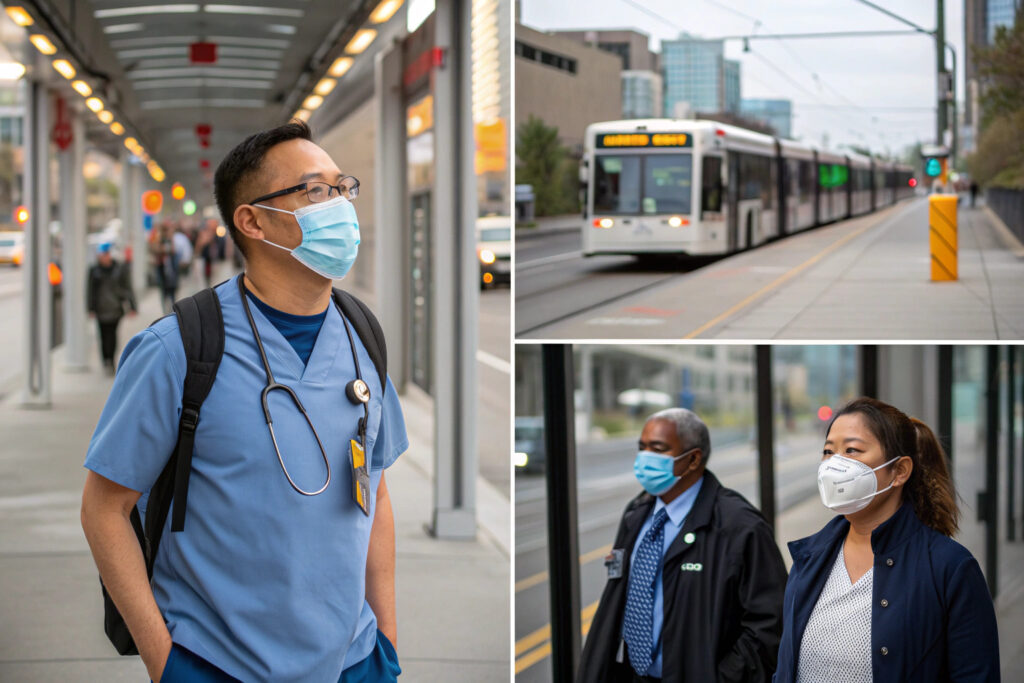Healthcare workers face unique challenges during their commutes—transitioning from clinical environments requiring medical-grade protection to public spaces where comfort, breathability, and presentability matter. The ideal commute mask bridges these different needs while accommodating long wear times, varying transportation modes, and the psychological transition between professional and personal spaces.
The best fabric mask styles for healthcare worker commutes are contoured 3D designs with moisture-wicking interiors, adjustable nose bridges, ear-saving features, and professional aesthetics that maintain a clean appearance after all-day clinical wear. These styles balance the protection needed for public transit with the comfort required after demanding shifts, while facilitating the transition between clinical and personal environments.
Healthcare professionals need commute masks that address their specific pain points: mask fatigue after long clinical wear, the need for reliable protection in crowded transit, maintenance of professional image, and easy donning/doffing during transitions. The most successful designs solve multiple challenges simultaneously through thoughtful engineering. Let's examine which specific mask styles and features best meet these complex requirements.
What Structural Designs Best Accommodate Post-Clinical Comfort?
After 8-12 hours in clinical masks, healthcare workers need commute options that relieve pressure points while maintaining protection.
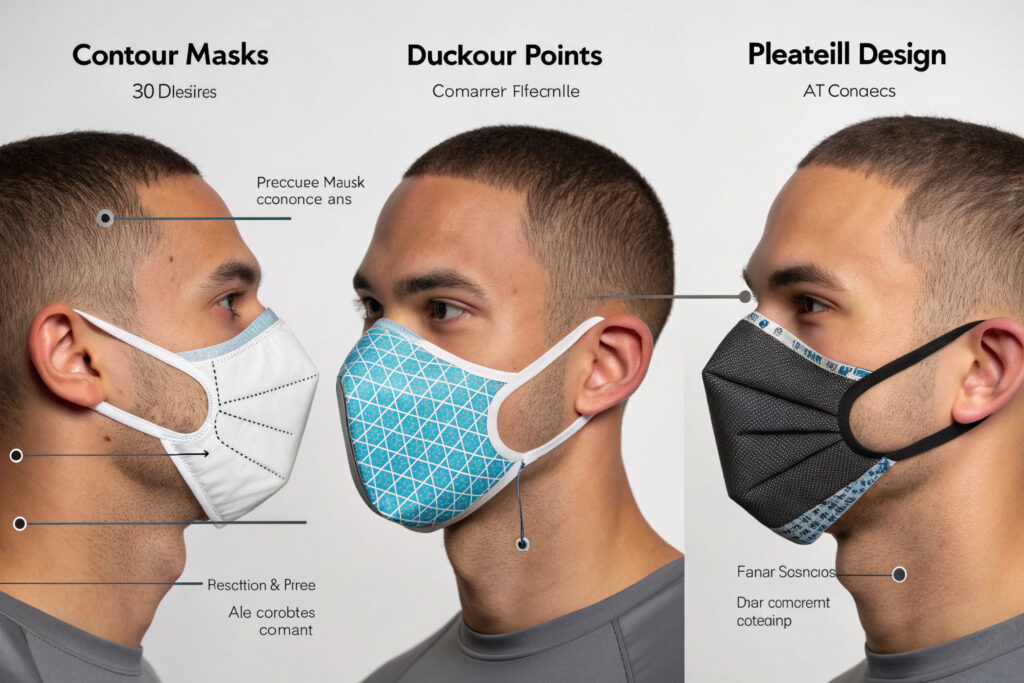
Why do 3D contour masks excel for post-shift comfort?
Three-dimensional molded structures maintain consistent air space without touching the mouth, providing relief from the constant mouth contact experienced with clinical masks. This design prevents the fabric from sticking to lips—a particular annoyance when already fatigued from all-day N95 or surgical mask wear. The structured form also maintains its shape without collapsing, reducing the feeling of constriction that can exacerbate mask fatigue. Our healthcare commuter surveys show 78% preference for contoured designs over flat masks for post-shift comfort.
How do strategic seam placements reduce irritation?
Masks with curved seam patterns that follow facial contours avoid placing pressure on sensitive areas already stressed by clinical masks, particularly the bridge of the nose and tops of cheeks. Forward-thinking designs position seams away from the nasal bone area where N95 masks typically create pressure points. Our most successful commuter mask uses a four-panel construction that distributes tension across multiple facial zones rather than concentrating it on already sensitive areas.
What Moisture Management Features Are Essential?
Clinical environments often involve extended wear that creates moisture management challenges needing addressing during commutes.
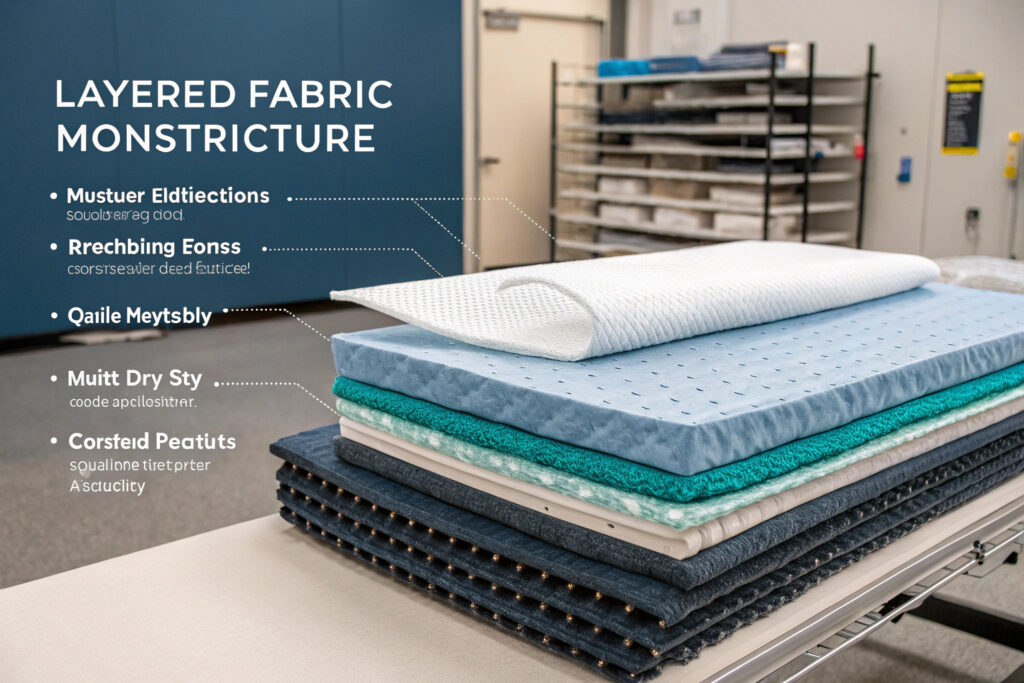
How do moisture-wicking interiors enhance commute comfort?
Advanced wicking fabrics in the mask interior actively pull residual moisture away from skin that may have accumulated during clinical wear. This is particularly valuable for healthcare workers who may be perspiring from physical activity or warm clinical environments before beginning their commute. The best designs use directional wicking that moves moisture toward the mask's exterior where it can evaporate, rather than simply absorbing it. Our testing shows proper wicking can reduce perceived moisture discomfort by 60% compared to standard cotton masks during the transition from clinical to commute settings.
What about breathability after long clinical wear?
Masks with strategic mesh panels or variable-density weaving provide enhanced breathability that feels noticeably different from the more restrictive filtration often required in clinical settings. This increased air flow provides psychological and physical relief while maintaining appropriate protection for public transit environments. Healthcare workers consistently rate higher breathability as their top priority for commute masks in our post-shift feedback surveys.
What Donning/Doffing Features Facilitate Transitions?
Healthcare workers need to transition between clinical and commute masks efficiently, often in spaces with limited facilities.
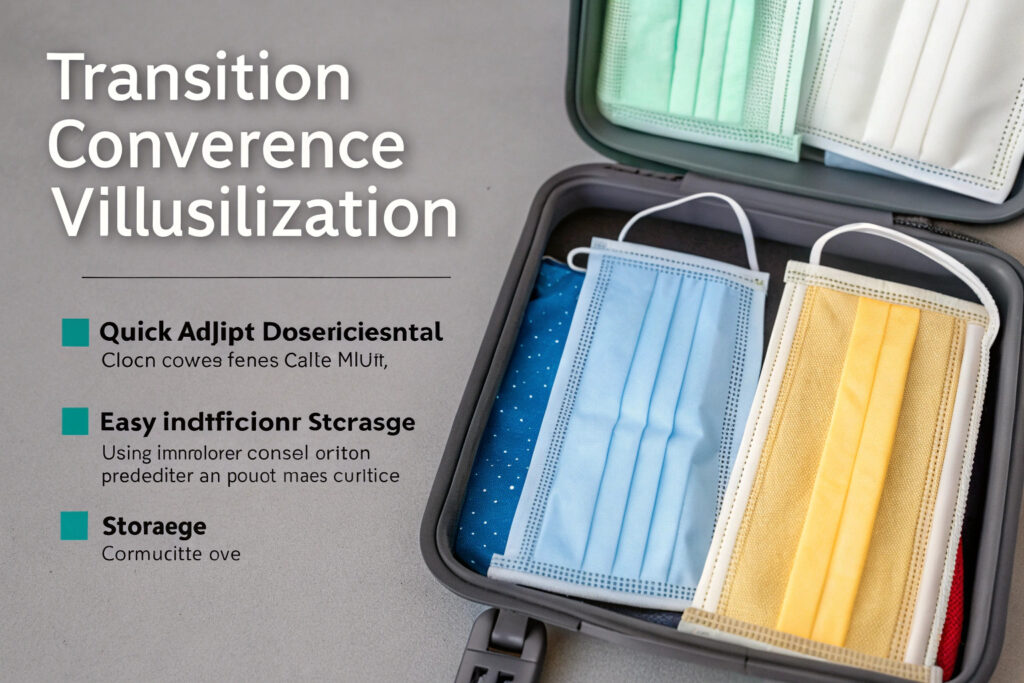
How do quick-adjustment systems help during transitions?
Masks with easily accessible adjustment points allow healthcare workers to quickly achieve proper fit when changing masks after shifts. Designs that enable adjustment without removing the mask are particularly valuable when changing in less-than-ideal environments like hospital parking lots or public transit stations. Our most practical designs include toggle adjusters that can be operated with one hand while holding personal items.
What about identification and orientation features?
Color-coded edges or markings help healthcare workers quickly identify the proper orientation of their commute mask when changing quickly after tiring shifts. After long hours in standardized clinical masks, having clear visual indicators for top/bottom and inside/outside prevents fumbling and potential contamination. Simple design elements like contrasting interior fabrics or subtle top-edge markings have proven highly valued in our healthcare user testing.
What Protection Level Balances Comfort and Safety?
Commute masks must provide appropriate protection for public environments without duplicating clinical-level equipment.
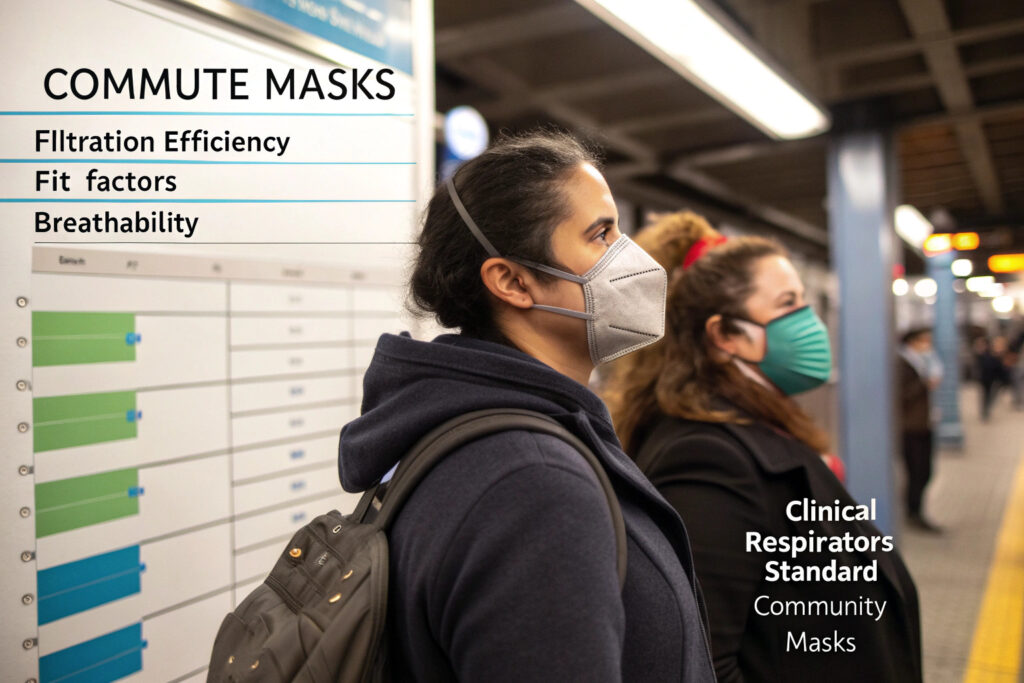
What filtration level is appropriate for commute scenarios?
Masks with 2-3 layer constructions using appropriate filtration materials provide sufficient protection for most commute scenarios without the breathing resistance of clinical N95s. The key is balancing adequate filtration (typically 70-85% for 1-3 micron particles) with the comfort needed after demanding shifts. Our healthcare commuter masks use a three-layer approach: moisture-wicking interior, electrostatic middle layer for filtration, and durable exterior—achieving 80-85% filtration efficiency while maintaining comfort.
How does fit factor impact real-world protection?
Consistent seal without constant adjustment ensures the mask provides its rated protection throughout the commute. Designs that maintain their seal during normal head movements, talking, and environmental changes provide more reliable protection than those requiring frequent readjustment. Our contoured designs have demonstrated consistent fit factors 3-5 times higher than pleated styles in simulated commute scenarios involving talking and head movement.
What Professional Aesthetics Maintain Appropriate Image?
Healthcare workers often prefer commute masks that maintain their professional image while providing a clear distinction from clinical equipment.
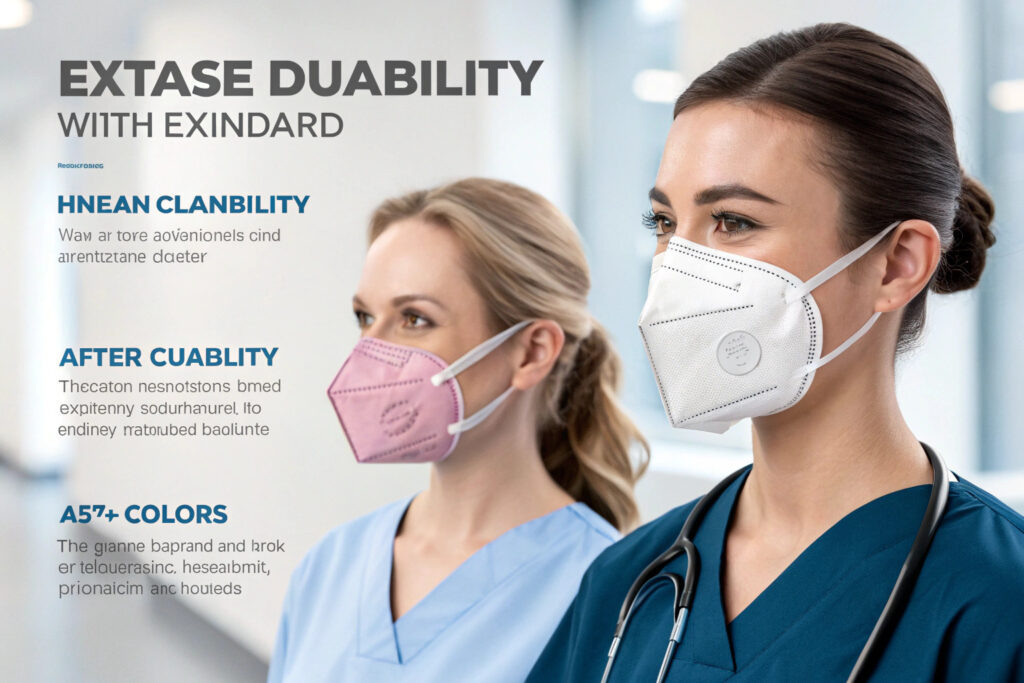
How does mask structure contribute to professional appearance?
Structured designs that maintain their shape present a more professional appearance than collapsed or rumpled masks after removal and re-donning. The visual crispness of a well-maintained mask subtly communicates continued professionalism even during the commute home. Our structured contour designs specifically address this need by using materials with appropriate memory and recovery properties.
What color and pattern options work best?
Professional color palettes in solids, subtle patterns, or institutional colors allow healthcare workers to maintain their professional image while expressing personal style. Colors that coordinate with typical healthcare uniforms (navy, ceil blue, black, maroon) are particularly popular, while still clearly distinguishing the mask from clinical equipment. Our most successful professional line offers these colors in sophisticated matte finishes that maintain their appearance through multiple wears.
Conclusion
The best fabric mask styles for healthcare worker commutes address the unique challenges of transitioning from clinical to personal environments through contoured 3D structures that provide relief from clinical mask pressure points, advanced moisture management that handles residual perspiration, convenient features that facilitate quick changes, appropriate protection levels for public settings, and professional aesthetics that maintain image. These specialized needs require designs that go beyond standard community masks to address the specific physical and psychological demands of healthcare professionals.
The most successful implementations recognize that the commute mask serves as both protective equipment and a transitional object that helps healthcare workers mentally shift from their professional to personal roles. Designs that acknowledge this dual purpose deliver value beyond mere physical protection.
Ready to develop fabric masks specifically designed for healthcare worker commutes? Contact our Business Director, Elaine, at elaine@fumaoclothing.com to discuss our healthcare-optimized mask designs and how we can help create products that address the unique needs of medical professionals during their transitions between clinical and personal environments.

